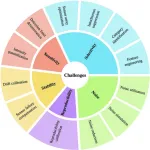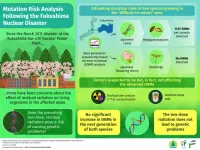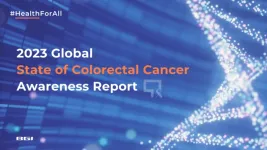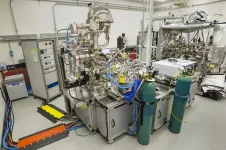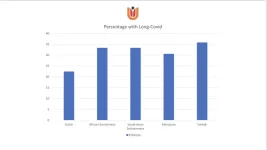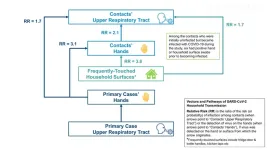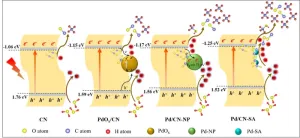Retinal microvasculature is a potential biomarker for acute mountain sickness
2023-04-07
This study is led by Dr.Ningli Wang and Dr.Yuan Xie (Beijing Tongren Hospital, Capital Medical University), they provide evidence that retinal microvasculature is a potential biomarker for cerebral microvasculature changes and acute mountain sickness(AMS) development during risk assessment of individuals at high altitudes.
Since the retinal and cerebral vasculature share many morphological and physiological characteristics, direct evaluation of the more accessible retinal vasculature should theoretically provide insights into the cerebral circulation. Therefore, the role of retinal imaging ...
Researchers leverage cell self-destruction to treat brain tumors
2023-04-07
CHAPEL HILL, N.C. – Glioblastoma is the most common type of brain tumor in adults. The disease is 100% fatal and there are no cures, making it the most aggressive type of cancer. Such a poor prognosis has motivated researchers and neurosurgeons to understand the biology of tumors with the goal of creating better therapies.
Dominique Higgins, MD, PhD, an assistant professor in the Department of Neurosurgery, has heeded the call. Higgins and a team of researchers at Columbia University have found ...
Deaths by suicide increase significantly during the week of a full moon
2023-04-07
INDIANAPOLIS—For centuries, people have suspected a full moon in the sky to cause mysterious changes in people. Now, psychiatrists at Indiana University School of Medicine have found deaths by suicide increase during the full moon.
“We wanted to analyze the hypothesis that suicides are increased during the period around full moons and determine if high-risk patients should be followed more closely during those times,” said Alexander Niculescu, MD, PhD.
Niculescu and his team looked at data from the Marion County coroner’s ...
How to make electronic noses smell better
2023-04-07
Imagine if you could ask a machine to “smell” something for you with just a click of a button. That’s what electronic noses, or e-noses, are for. They are systems that combine chemical gas sensors, signal processing and machine learning algorithms to mimic the sense of smell. E-noses can be used for many purposes, such as checking food quality, monitoring air pollution, diagnosing diseases and detecting explosives. How do they work? What are the challenges and opportunities in this field? A team led by Jingdong Chen of Northwestern Polytechnical University in Xi’an, China and ...
Study assesses risk of mutation due to residual radiation from the Fukushima nuclear disaster
2023-04-07
Ionizing radiation from nuclear disasters are known to be harmful to the natural environment. The Fukushima Dai-ichi Nuclear Power Plant meltdown that occurred in 2011 is a prominent example of such a disaster in recent memory. Even a decade after the incident, concerns remain about the long-term effects of the radiation. In particular, it is not clear how the residual low-dose radiation might affect living organisms at the genetic level.
The brunt of the disaster is usually borne by the floras inhabiting the contaminated areas since they cannot move. This, however, makes them ideal for ...
Simple but revolutionary modular organoids
2023-04-07
A team led by Masaya Hagiwara of RIKEN national science institute in Japan has developed an ingenious device, using layers of hydrogels in a cube-like structure, that allows researchers to construct complex 3D organoids without using elaborate techniques. The group also recently demonstrated the ability to use the device to build organoids that faithfully reproduce the asymmetric genetic expression that characterizes the actual development of organisms. The device has the potential to revolutionize the way we test drugs, and could also provide insights into how tissues develop and lead to ...
New book explores possibilities of colonizing planets, moons and beyond
2023-04-07
Dan Răzvan Popoviciu new book New Worlds: Colonizing Planets, Moons and Beyond (published by Bentham Science) explores the possibilities of transforming humanity into a multi-planetary species, while also sounding an alarm about our long-term future. It emphasizes the importance of efficiently using Earth's resources and expanding beyond the planet's borders.
In the book, Popoviciu discusses how various planets, moons, and asteroids in the Solar System can provide important resources and become potential new home worlds for humans. The author goes beyond simple colonization and discusses solutions for terraforming ...
Spike in major league home runs tied to climate change
2023-04-07
In the history of Major League Baseball, first came the low-scoring dead-ball era, followed by the modern live-ball era characterized by power hitters such as Babe Ruth and Henry "Hank" Aaron. Then, regrettably, was the steroid era of the 1990s and early 2000s.
Now, could baseball be on the cusp of a "climate-ball" era where higher temperatures due to global warming increasingly determine the outcome of a game?
A new Dartmouth College study suggests it may be. A report in the Bulletin of the ...
Disease history doubles rate of colorectal cancer screening for family members | BGI Insight
2023-04-07
To uncover attitudes and the biggest challenges facing colorectal cancer (CRC) awareness and screening, BGI Genomics today released its State of Colorectal Cancer Awareness Report, marking the first-ever global survey report on the world's third most common cancer. This report is released on World Health Day, April 07, 2023, in line with achieving Health For All, and seeks to motivate action to tackle the health challenges of today and tomorrow.
This ...
Cedars-Sinai heart experts elected to lead, join prominent medical societies
2023-04-07
Two Smidt Heart Institute experts have been honored for their contributions to medical research by being inducted into select medical societies, while a third expert has been selected for a leadership position.
Cardiologist, echocardiographer and clinician-scientist Susan Cheng, MD, director of Cardiovascular Population Sciences in the Smidt Heart Institute and the Erika J. Glazer Chair in Women’s Cardiovascular Health and Population Science, has been elected to the American Society for Clinical Investigation (ASCI) Council. ASCI is regarded as the most prestigious ...
Internet access must become human right or we risk ever-widening inequality
2023-04-07
People around the globe are so dependent on the internet to exercise socio-economic human rights such as education, healthcare, work, and housing that online access must now be considered a basic human right, a new study reveals.
Particularly in developing countries, internet access can make the difference between people receiving an education, staying healthy, finding a home, and securing employment – or not.
Even if people have offline opportunities, such as accessing social security schemes or finding housing, they are at a comparative ...
Scientists use peroxide to peer into metal oxide reactions
2023-04-07
UPTON, NY— Researchers at Binghamton University led research partnering with the Center for Functional Nanomaterials (CFN)—a U.S. Department of Energy (DOE) Office of Science User Facility at Brookhaven National Laboratory—to get a better look at how peroxides on the surface of copper oxide promote the oxidation of hydrogen but inhibit the oxidation of carbon monoxide, allowing them to steer oxidation reactions. They were able to observe these quick changes with two complimentary spectroscopy ...
Biodiversity auditing key to success of new conservation plans
2023-04-07
New research led by the University of East Anglia (UEA) suggests a way to greatly improve the outcomes of biodiversity conservation efforts globally.
Scientists from UEA, the RSPB and Natural England, propose that biodiversity auditing should be integral to the ongoing development of regionally-targeted conservation plans, such as the Local Nature Recovery Strategies (LNRS) established by the UK Environment Act 2021.
It follows work conducted with two conservation projects in the East of England - one in North Norfolk and another in the Brecks - using this approach to guide conservation locally.
A biodiversity ...
Long-COVID a greater burden for migrant groups than the native population
2023-04-07
All prominent migrant groups in the Netherlands are suffering more from long-covid than the native Dutch population, research from Amsterdam UMC has found. The study, published today, in The Lancet Regional Health – Europe, shows that in some groups the rates of long-covid are up to 50% larger than in the Dutch population. Resulting in many migrant groups “suffering in silence,” in the words of senior author Professor Charles Agyemang.
COVID-19 has had a devastating impact on vulnerable communities, particularly people from ethnic minorities and migrant backgrounds. Research from Amsterdam UMC already found that these populations ...
Convenience, control among benefits that inspire automated feature use
2023-04-07
UNIVERSITY PARK, Pa. — People often complain about the occasional misfires of automated features, such as autocorrect, but users generally enjoy interacting with the tools, according to researchers. They added that focusing on certain benefits of automated features may help developers build automated tools that people use more and complain about less.
In a study, researchers said that users appreciate the convenience and control of automated features, which also include YouTube’s autoplay and Google Gmail’s smart compose. People listed the technology’s ...
Life-threatening childbirth complications among Medicaid enrollees vary widely by state and race-ethnicity
2023-04-07
The risk of life-threatening maternal complications from childbirth may be higher depending on where you live, a new study finds.
For Medicaid enrollees in Utah, the rate of “near miss” instances that could have led to the death of a birthing person during pregnancy or delivery was the lowest in the U.S., occurring among 80 per 10,000 live births.
Meanwhile, on the other side of the country in Washington D.C., the rate of such cases was nearly three times higher – 210 per 10,000 deliveries.
The drivers for these unexpected maternal outcomes, referred to as ...
Seven leaders named the 2023 AADOCR Fellows
2023-04-07
Alexandria, VA – The American Association for Dental, Oral and Craniofacial Research (AADOCR) announced the 2023 AADOCR Fellows during the Opening Ceremonies of the 52nd Annual Meeting of the AADOCR, which was held in conjunction with the 47th Annual Meeting of the Canadian Association for Dental Research (CADR), that took place on March 15, 2023.
The AADOCR Fellows Program recognizes leaders of AADOCR and individuals who have served the organization in various ways throughout their careers. Through this program, AADOCR strengthens its mission to drive dental, oral, and craniofacial research to advance health and well-being. All nominees must pass ...
NIH-funded study finds doxycycline reduces sexually transmitted infections by two-thirds
2023-04-07
The oral antibiotic doxycycline prevented the acquisition of sexually transmitted infections (STIs) when tested among men who have sex with men (MSM) and transgender women who took the medication within 72 hours of having condomless sex, according to findings published today in the New England Journal of Medicine. Specifically, the post-exposure approach, termed doxy-PEP, resulted in a two-thirds reduction in the incidence of syphilis, gonorrhea, and chlamydia among the study participants, all of whom reported having an STI within the previous year. However, the research also revealed a slight increase in antibacterial resistance that requires further ...
Computer scientist confronts worldwide challenge of online security and privacy
2023-04-07
A University of Texas at Arlington computer security researcher has received a prestigious federal grant to determine what technologies and methods work best to attain and retain online security and privacy.
Shirin Nilizadeh, assistant professor in the Department of Computer Science and Engineering, received a $200,000 National Science Foundation grant to study social media discussions and better understand what concerns are about online security and privacy, what technologies and tools they suggest to each other to use and whether ...
Requirement to wear masks in hospitals may have little impact on COVID-19 transmission during Omicron wave, UK study suggests
2023-04-07
**Note: the release below is a special early release from the European Congress of Clinical Microbiology & Infectious Diseases (ECCMID 2023, Copenhagen, 15-18 April). Please credit the congress if you use this story**
Embargo: 2301H UK time Thursday 6 April
Requirements to wear surgical masks in a large London hospital during the first 10 months of Omicron activity (December 2021 to September 2022) made no discernible difference to reducing hospital-acquired SARS-CoV-2 infections, according to new research being presented at this year’s European Congress of Clinical Microbiology & Infectious Diseases (ECCMID) in Copenhagen, ...
Omicron appears more deadly than seasonal influenza, study suggests
2023-04-07
**Note: the release below is a special early release from the European Congress of Clinical Microbiology & Infectious Diseases (ECCMID 2023, Copenhagen, 15-18 April). Please credit the congress if you use this story**
Embargo: 2301H UK time Thurs 6 April
Adults hospitalised with the SARS-CoV-2 Omicron variant have a higher death rate than those hospitalised with seasonal influenza, even though Omicron is considered less virulent with lower case fatality rates than the delta and alpha strains, new research being presented at this year’s ...
Spread of COVID-19 in households is linked to virus on hands and surfaces, say researchers
2023-04-07
IMPERIAL COLLEGE LONDON PRESS RELEASE
Under STRICT EMBARGO until:
Thursday 6 April 2023
23:30 UK TIME / 19:30 ET
Peer-reviewed / Observational study / People
Spread of COVID-19 in households is linked to virus on hands and surfaces, say researchers
A new Imperial College London-led study provides the first empirical evidence for transmission of SARS-CoV-2 via people’s hands and frequently touched household surfaces.
The research sheds new light on the spread of COVID-19 in households, where most transmission of SARS-CoV-2 occurs, and it is the first to link the presence ...
Environmental impact reports hugely underestimate consequences for wildlife
2023-04-07
Environmental Impact Assessments may hugely underestimate the effect that new developments have on wildlife, according to new research from the University of East Anglia.
This is because they don’t take into account how birds and other animals move around between different sites.
A study published today shows how a new airport development planned in Portugal could affect more than 10 times the number of Black-tailed Godwits estimated in a previous Environmental Impact Assessment.
The research team have been studying these Godwits across Europe for over 30 years but they say that any species that moves around is likely to be under-represented ...
Effect of palladium chemical states on CO2 photocatalytic reduction over g-C3N4: Distinct role of single-atomic state in boosting CH4 production
2023-04-07
Using solar energy and photocatalysts to convert CO2 into high value-added chemicals can simultaneously alleviate the greenhouse effect and energy shortage, being recognized to be a promising alternative to achieve sustainable social development. Single atom cocatalysts decoration has been demonstrated to be effective strategy to improve the CO2 photocatalytic reduction efficiency. Unfortunately, when unraveling the mechanism behind performance promotion, most studies mainly focused on clarifying the superior ...
Physicians should be on alert for group A strep as cases experience historic rise, study finds
2023-04-06
The U.S. experienced an unprecedented number of group A streptococcal infections in children from October to December of 2022, which should alert physicians to check for the potentially deadly infectious disease as the country moves out of the pandemic, according to research published by UTHealth Houston.
The study, led by senior author Anthony R. Flores, MD, PhD, MPH, associate professor and chief of pediatric infectious diseases at McGovern Medical School at UTHealth Houston, was published this month in Clinical Infectious Diseases.
During the COVID-19 pandemic, the rate of other infectious diseases dropped due to safety measures such as social distancing and mask-wearing, according ...
[1] ... [1880]
[1881]
[1882]
[1883]
[1884]
[1885]
[1886]
[1887]
1888
[1889]
[1890]
[1891]
[1892]
[1893]
[1894]
[1895]
[1896]
... [8709]
Press-News.org - Free Press Release Distribution service.


